For almost one hundred years, La Bahia Apartments was ground zero for the most legendary parties, soirees and quinceañeras. Legends persist of the dubious bell tower encryptions, hauntings and the “vibe.” Ask just about anyone who grew up in Santa Cruz, and they have a La Bahia story.
The original La Bahia Apartments, that 1926 plaster of Paris, architecturally Spanish/Italian, secret Bohemian enclave (that many thought was a mission) was a rare sanctuary for students, families, dogs, artists, refugees and the socially maladjusted. As well as a home to thousands and thousands of young people from around the world, including lucky Santa Cruzans.
For those in the know, La Bahia, even in the 1980s, was already undergoing hard times. The constant saltwater mist of the bay had eroded the facade over the decades and anything that was metal became corroded with a fluorescent green oxidation. Also, an odd black mycelium inhabited the framework. I thought wires were sticking out of my ceiling in room 302. Nope. It was mushrooms.

Some days are diamonds
When I got hired by the Santa Cruz Beach Boardwalk in 2008, it was obvious La Bahia’s “best days” were behind it. And yet it was exactly that decomposition, with winding pathways through pungent blooming magnolias, that imbued the physical space with magical charm. Early in the morning, when all was quiet, the courtyard filled with tapered fog and the echoing sound of seals bounced off the mosaic tiles. That courtyard had an ability to transport and lift up the spirits.
I worked out of the SCBB Human Resources Department for a decade. I was specifically involved with the legion of workers who were there under the J1 International Student Visa. Every year, upwards of 300,000 international students descend on the United States to work. Most have to choose between work at state parks, resorts or amusement parks, with the Boardwalk being a highly valued, and talked about, summer workplace.
For six months a year, La Bahia was filled to the brim with students from around the world, ages 19 to 24. Ukraine, Poland, Bulgaria, Macedonia, Jamaica, Singapore, Romania, Mongolia—you name it. Every summer was like an episode of International Big Brother.
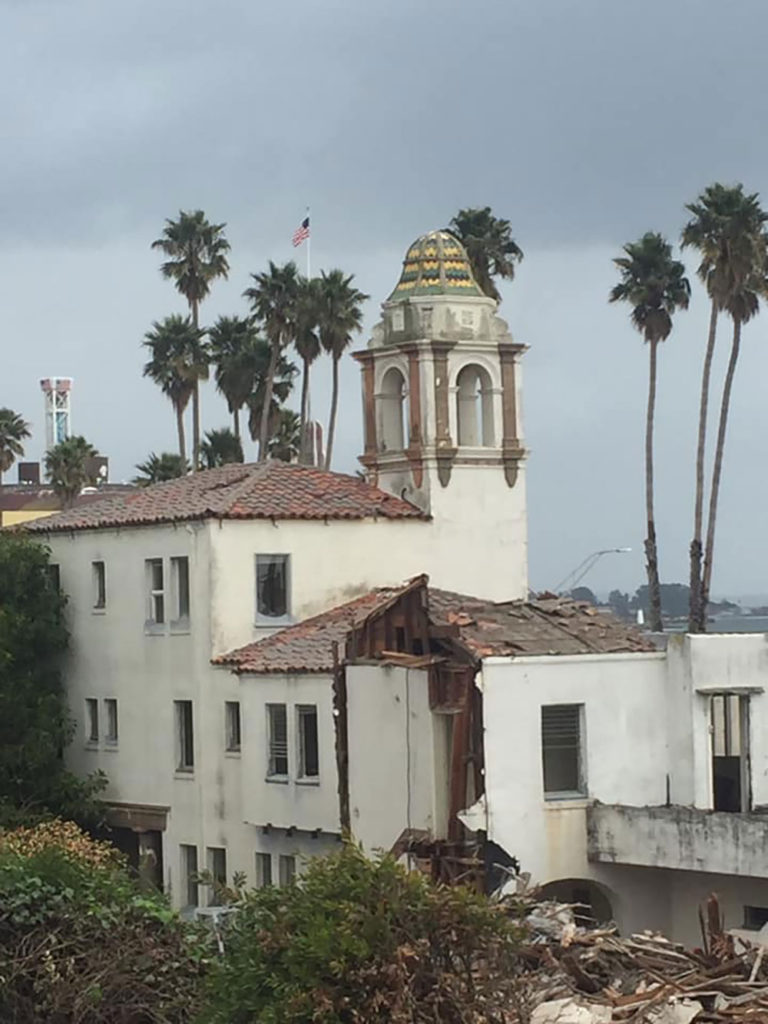
Some days are rocks
Tudor George Croitor came from Romania to work at the SCBB, and lived in La Bahia during the summer of 2014. “I was sitting in front of La Bahia on a bench, with my friend from Poland,” says new dad Croitor, from his home in Romania.
“We were enjoying the ocean breeze, and talking about how the corner market raised its price of a can of beer, 30 cents, in one day. All of a sudden, a naked guy is in front of La Bahia and starts talking gobbledygook. We locked his arms behind his back until the police came. Later, DNA came out and told us not to touch crazy naked people. Good advice, I suppose,” Croitor laughs. He called the entire experience living at La Bahia a “fever dream.”
Some doors are open
Joanne Purdy Guzman, co-owner of Bruno’s Restaurant in Scotts Valley (with husband Rogelio), grew up in La Bahia. “My mom, Lois, was the property manager since the early ’90s and lived in that iconic three-story unit with the giant picture windows [aka the command center]. I lived right across the deck with a built-in TV screen—also known as an unobstructed view of the ocean, the beach, and endless people-watching gold. Honestly, the deck was better than anything Netflix has ever produced,” Guzman says.
From Romania to Scotts Valley, there’s a certain tone of voice when people reminisce about La Bahia. It was more than just a building. It was a safe gated space where young people, just off back-to-back, all day/night shifts, at SCBB, could let their hair down. Which could only mean one thing.
La Bahia was ground zero for parties.
And my job was to shut down parties.
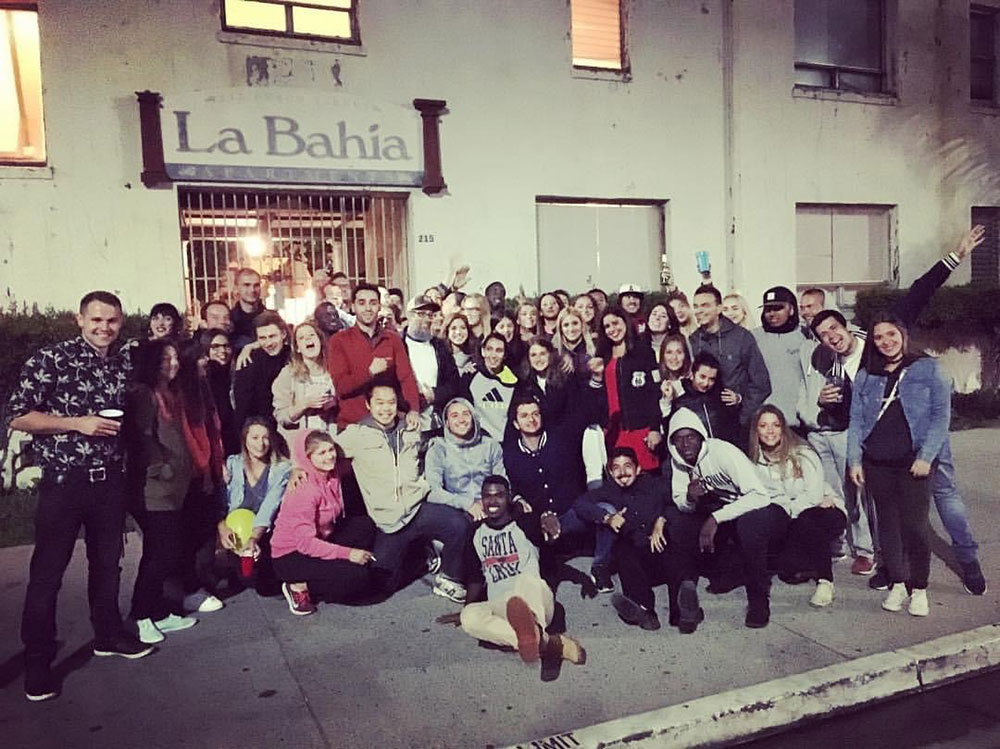
Some roads are blocked
I lived with 100 different international students, each year, in La Bahia. The other 100 were scattered amongst Beach Flats, and would drift to La Bahia at night. Everyone in the program was part of my roster. We co-existed, we mingled and we looked out for each other (at least that’s what I tried to teach them).
I worked 24 hours a day, seven days a week, sometimes. And every day was different. My ADHD brain was in heaven.
The first two years, I worked solo-ish (my immediate supervisor, Q, was my lifeline when things got unhinged—she was on speed dial).
My job included weekly trips to Safeway (for all 200), getting their rooms ready with beds and accoutrements, making sure they arrived safely, finding them when they were lost en route, orientation to their new life, waking them up if they were late for work, mail, taking them to the hospital, fixing whatever was broken (if possible), bedside pep talks when depression was noticed, ombudsman when apartments got tense, and the aforementioned shutting down of parties.
My back bedroom window faced what was constructed as a vecindad. A place to gather. During my first weekend, the noise coming from the courtyard was more than a din; it was approaching a roar. I had been told to “shut down parties” but without an instruction manual. I had heard horror stories of other people who held my position. The first night, I closed all my windows, turned up my stereo, and made believe I lived alone.
Second night, 1am, I balled up and headed out into the courtyard. A good 150 people made up of local boardwalk employees, new friends and international students were mingling. Jamaicans were dancing in the gigantic banyan tree. A Macedonian was on the tiled roof of the apartments and yelling, “DNA. In my country, parties do not start until one!”
A frosty keg was on the interior steps and was pumping out full red cups at a high velocity. I will not degrade this article with the vulgarity that came out of my mouth—nor do I relish that it was directed at somebody who was only trying to have a good time—but was it effective? Yes. It was like I poured a ton of sand on a raging bonfire.
I have been called a “party-pooper” in almost every language.
Sundowns are golden
Santa Cruz’s Psychedelic Laureate, David Jay Brown, recalls his times at the infamous party place. “The La Bahia was where legendary writer Peter Stafford—author of the classic Psychedelics Encyclopedia—used to live,” Brown says. “I used to hang out there regularly when I first moved to Santa Cruz during the 1980s. When Peter was low on cash to pay his rent he used to post posters for his lectures on “How to Use Psychedelics Intelligently” (that he held in his home) all over Santa Cruz. Dozens of people used to show up, donating money, turning his apartment into a wild party each time,” Brown laughs.
In 1987 you might have found legendary writer R.U. Sirius, or Robert Forte, author of Entheogens and the Future of Religion, or Bruce Eisner, author of Ecstasy: The MDMA Story, or even David Jay Brown talking to the fish in the koi pond. It was a genuine cluster of literate psychedelia. Which explains why La Bahia sometimes acted as a strange attractor, and a non-locational time-phasing TARDIS.
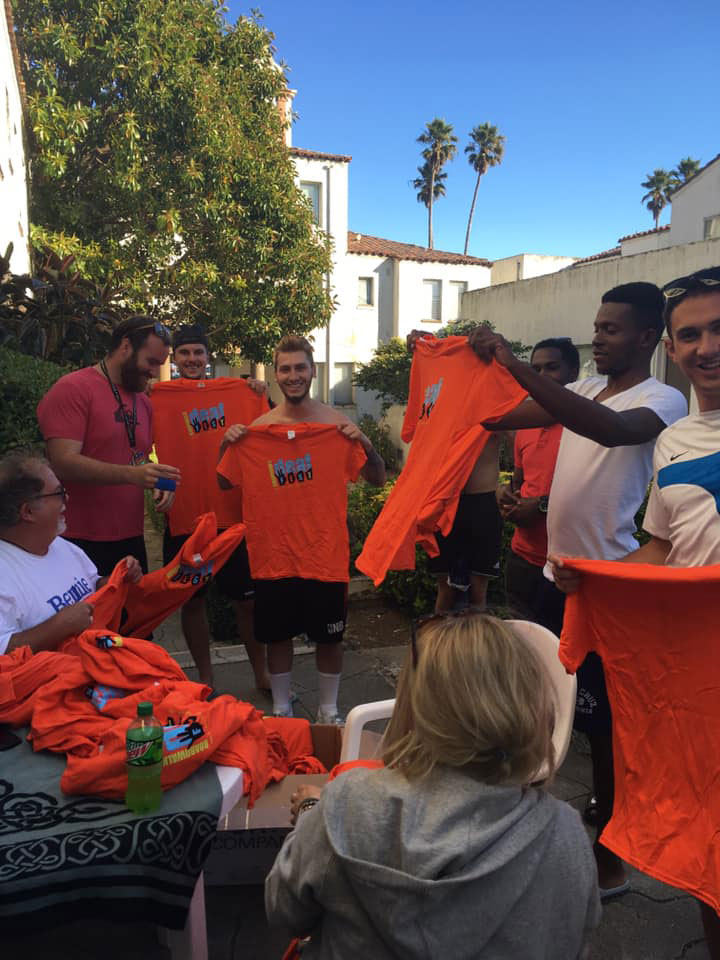
Then fade away
Tourists would always come in and ask what La Bahia was. I was more than happy to show them room 412. The Clint Eastwood room, where Dirty Harry stayed in the movie Sudden Impact—spurring his most famous catch phrase, “Go ahead, make my day.” But mostly I looked after the two thousand J1-ers who walked the alabaster hallways.
My techniques evolved from yelling to weekly newsletters that spelled out where parties should be held (the beach). For the ten years I was living there, a palpable electricity ran through that building. It might have been faulty wiring. But everyone will tell you it was more than that. La Bahia was special.
And if I never do nothing
The cultural differences made acceptable workplace behavior challenging at times. Because HR tended to be almost all women, I was often brought in to advocate for male employees who were under investigation for improper sexual comments.
Vlad swore to me that the only thing he said to his manager at the Boardwalk was “balls.”
“I said balls, she said balls. Balls, balls, balls. Big deal,” said Vlad.
Surrounded by the entire HR team, Vlad and I awaited the accounting of this ball talk. “You have several complaints against you,” the top HR boss said.
This didn’t bode well for Team Ball. “Vlad, Your manager says you crept up behind her, and whispered in her ear, that you, I quote, ‘have a large penis and would like to put it on her back,’ end quote.”
We lost that case and Vlad went back to Ballgaria.
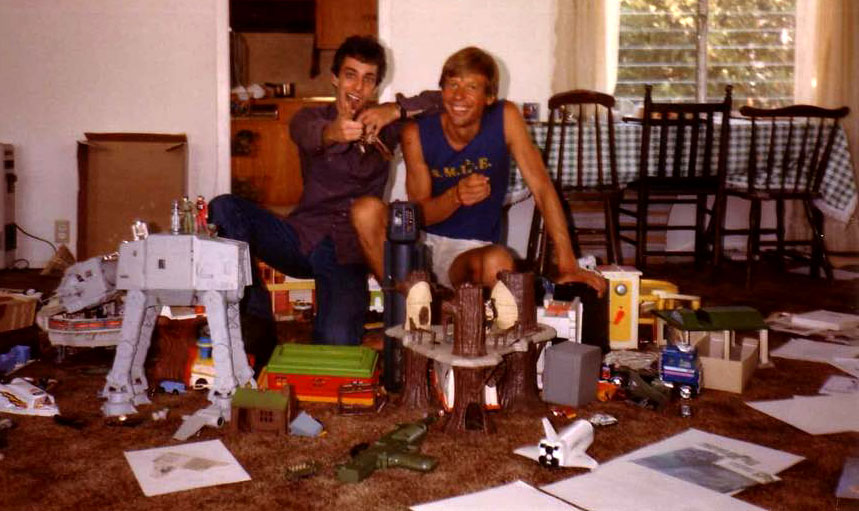
And if I never do nothing
Other times were more transcendent. Ileana from Romania was lithe, almost ethereal and feeling very sick. In the waiting room at Dominican Hospital, it was obvious that her English was only good enough to just get by. She was tense. I pulled out my phone and started showing her pictures of Romania. Her face lit up, and the knot in her chest subsided. We looked at digital pictures and laughed. She was 6,000 miles from home, but for a little while it felt like she was with family.
I’m coming back some day
“Every third weekend in July, we’d wake up to the sounds of slamming porta-potties (an underrated alarm clock) as the Wharf to Wharf crowds, thousands of people, assembled right outside our windows. From that perch, we witnessed epic storms, rogue waves, police chases, wandering musicians, dramatic tourists, lost UCSC students, and the full spectrum of humanity—fanny packs and all. It was live theater, and we had front-row seats every day,” Guzman recalls with pride.
Even walls fall down
Whatever original firmament that still might exist of La Bahia, held together with mycelium spores and seaweed, no longer holds the tales, the journeys, the epic parties and transformed lives that inhabited its sacred walls, for decades.
La Bahia is dead, long live La Bahia.
DNA is an author, comedian, and filmmaker. Find out more at votedna.com


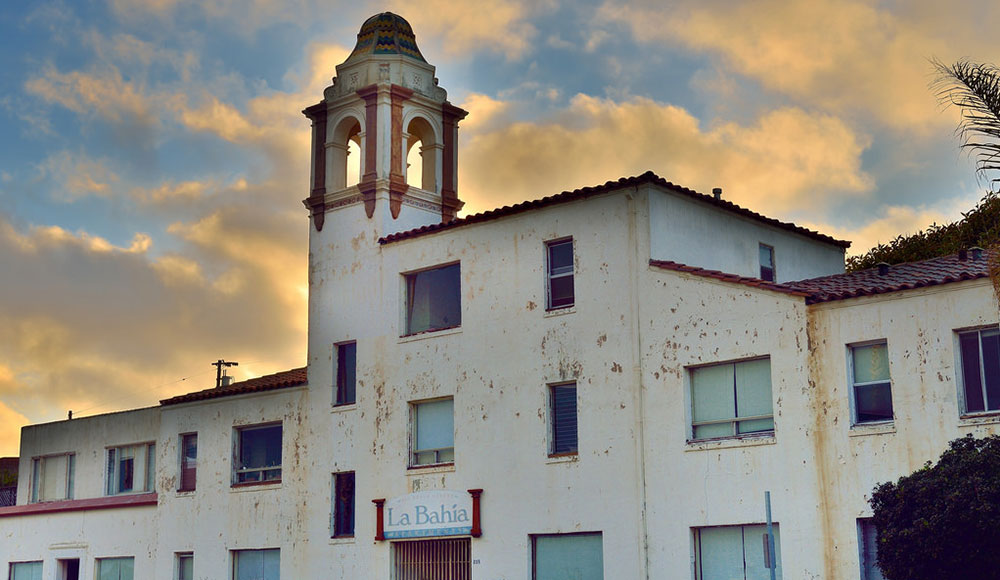


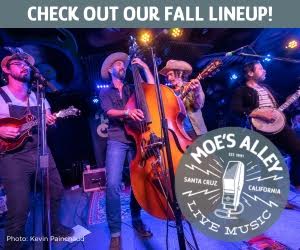

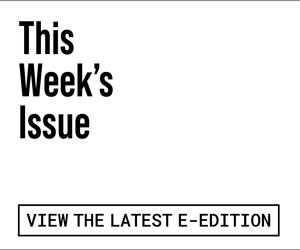






My only experience with La Bahia. It was around 1982 when an acquaintance asked me to drive her to the La Bahia. A friend she owed money to lived there & she wanted to pay her friend back. I drove her there and she asked me to wait in the car. I sat and waited and waited and waited. FINALLY she came out and got in my car. I was driving her home and she kept nodding off!! OMG – I sat and waited while she went in to shoot up heroin!! I was very naive when it came to hard drugs – but I learned my lesson that day!
Great story!
In the late 70s, I worked for a local moving company. La Bahia’s sister old building was the Casa Del Rey which was a decrepit retirement home. One day we were moving a person into a second story apartment.
We had the elevator crammed full when an ambulance showed up to transport somebody from the second floor. I was freaking out, knowing the other elevator was broken and thinking this was an emergency. I offered to yank everything out of the elevator, but the ambulance guy just laughed, told me they arrive there almost every day, his transport was not really an emergency and that he was going to run over to the La Bahia for a minute.
He comes back five minutes later (to a now empty and ready elevator) reeking of pot.
Years before, late 60s I used to stay at a friend’s house that was just up from the bowling alley. That neighborhood was crazy then and never stopped being crazy!
Wholesome glimpses of the past. Even if the short time spent in La Bahia was only a small step in my life’s journey, it left a giant sized footprint. See you on the flipside, D!
Bought weed from a couple named Lisa and Dick that my sister and I met at the Jing jiang restaurant (best Chinese food EVER) early 80’s. My name is Liisa and my ex husband’s name was Dick. Also ran up and down the halls drunk yelling something Clint Eastwood like 😆😆 man oh man I miss the 80s
The most beautiful Spanish woman arrived at my apartment in La Bahia, 7:00AM, surfboard in hand. At the end of the party the previous evening I’d offered to take her surfing any time she liked and gave her my room number.
I quickly donned my wetsuit and we drove to four-mile beach.
La Bahia – 1990
The place sounds so cool… Boho…
i was the sun letter carrier at La Bahia in the early 80 before the yuppies destroyed the soul of Santa Cruz. i was happy to deliver the tiny boxes for the People who would await their checks, love letters and the like. Many were dirt poor but they had solace that was affordable! The Del Rey was another place that had the old souls of Santa Cruz old with soul. now the beach area lacks heart and soul and the poor are there no more. Capitalism sucks!
I poured all the sidrwalks and curb & gutter out in front of the La Bahia about 1990- ish. The design of the sidewalk was supppsed to look like a wave. I wonder of the sidewalks are still there?